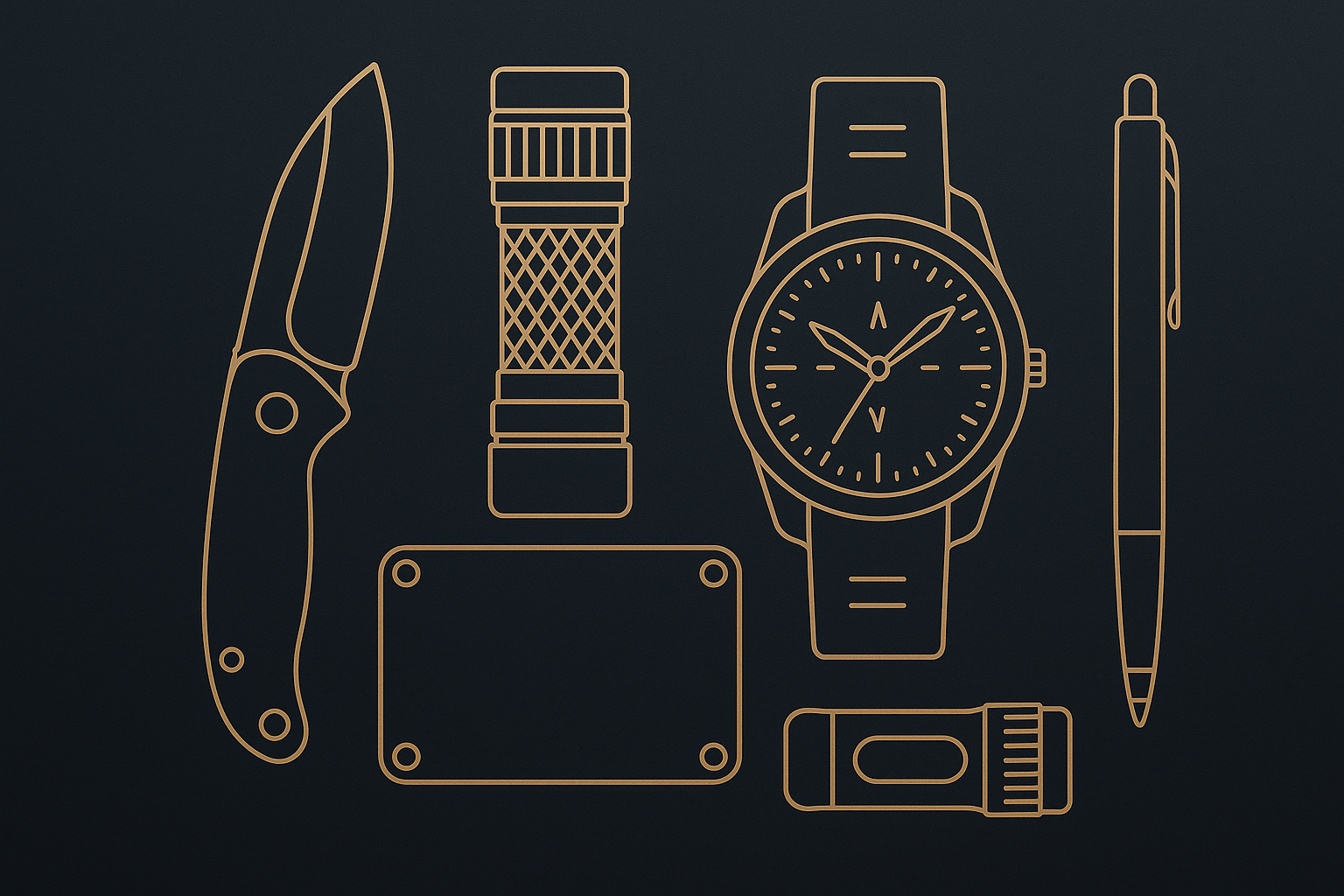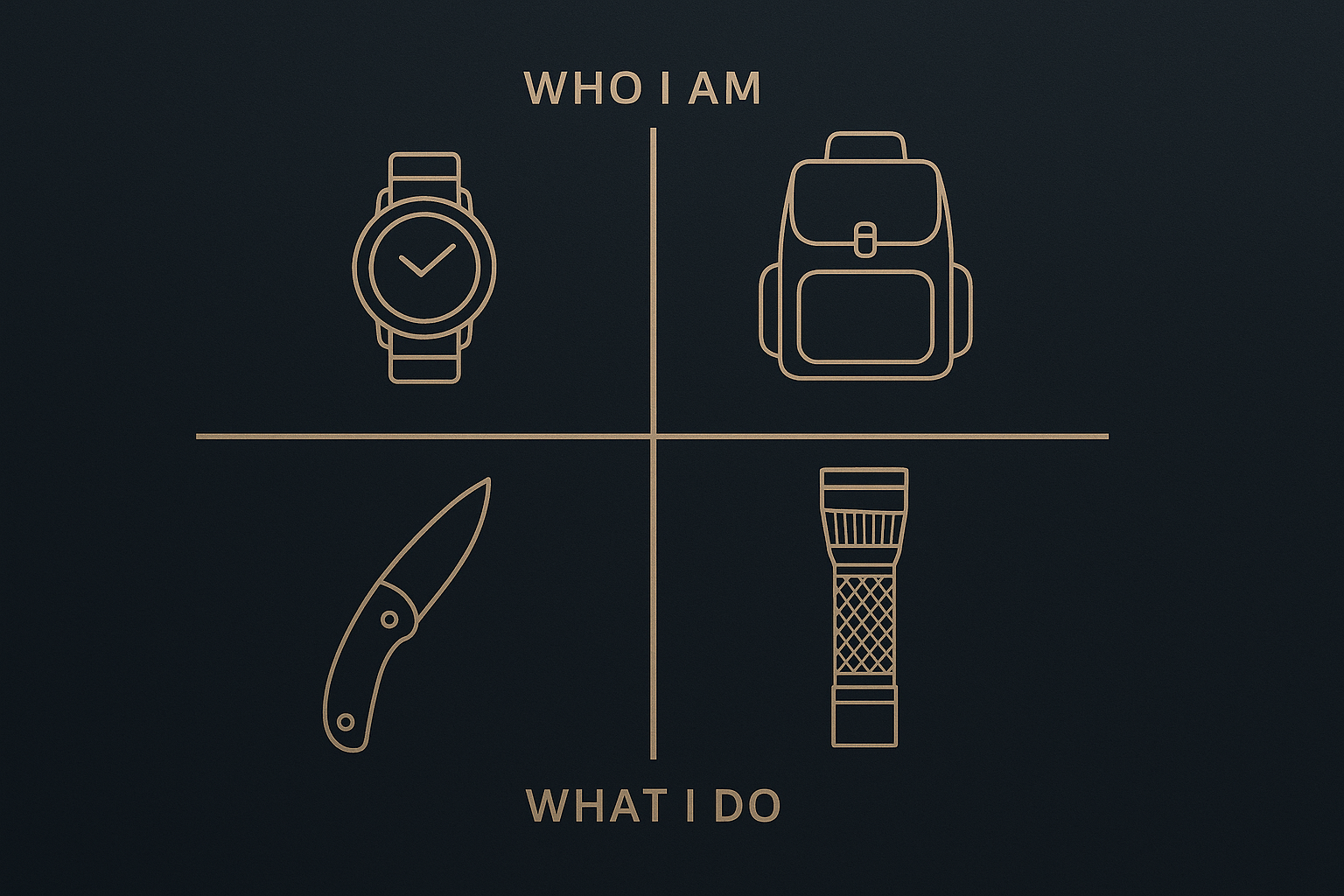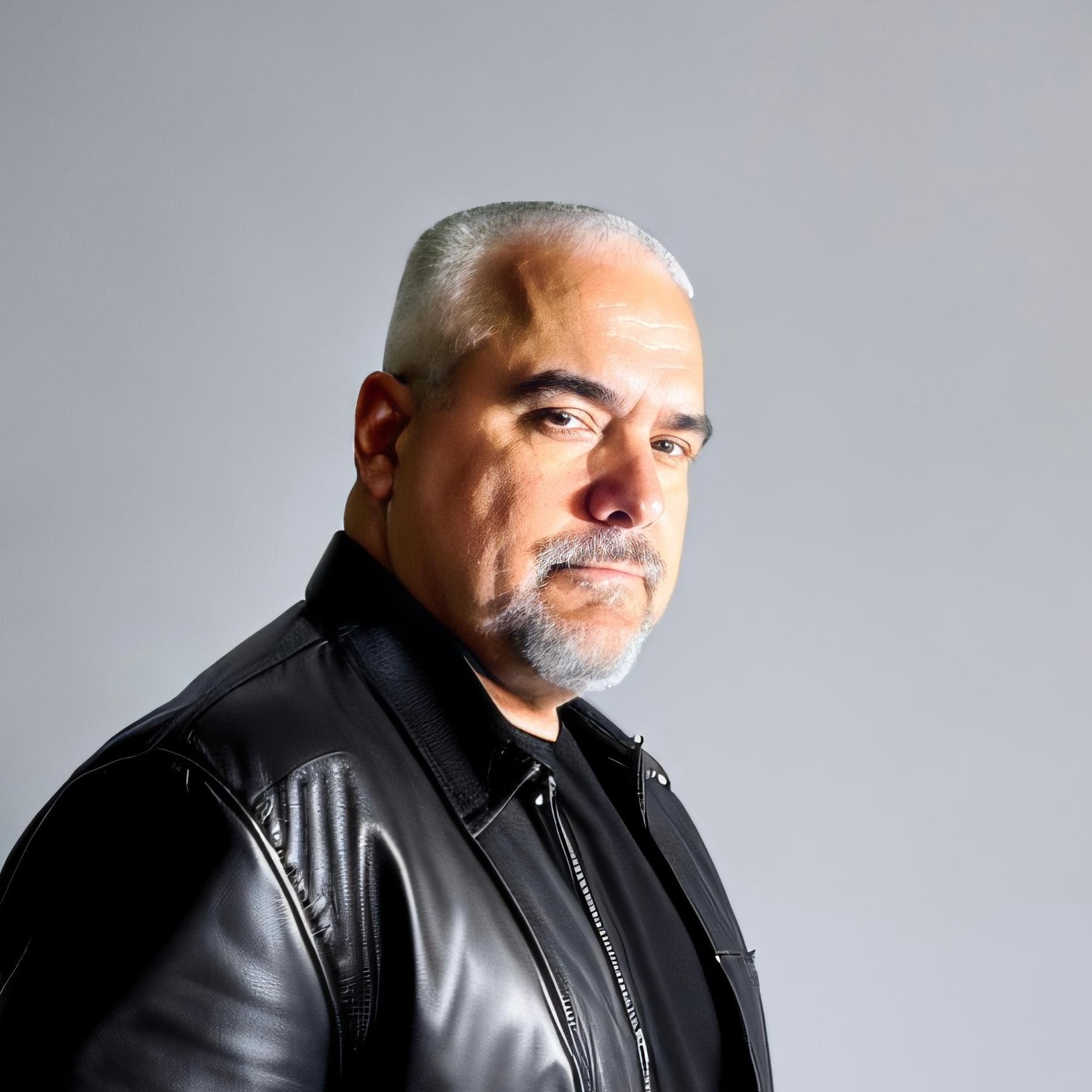
Growing Up with Tools in Hand
I grew up in the ’70s and ’80s, when kids spent entire summers outdoors - biking, fishing, hiking, exploring. If a bike chain broke or a fishing line tangled, we figured it out ourselves. Tools weren’t optional; they were survival. A pocketknife wasn’t something you carried for show. It was what made the day possible.
Portland, Oregon, where I grew up, is home to some of the biggest names in the knife and tool industry: Leatherman, Gerber, Kershaw, CRKT, Benchmade. That local culture only deepened my appreciation for functional gear. Over time, I became interested not just in what these tools could do but also in how they were designed. Clean lines, symmetry, and balance mattered.
That early mix of necessity and appreciation evolved into what today is known as Everyday Carry, or EDC.
What Is EDC?
At its core, EDC is simple: it’s the set of items you keep with you every day to make life easier, safer, or more productive.
For some, that’s just a wallet, keys, and phone. For others, it’s a carefully curated rotation of knives, watches, pens, and bags. Some carry for preparedness, others for self-expression. Most of us, knowingly or not, fall somewhere in between.
What makes EDC compelling is that it’s both deeply personal and universally relatable. Whether it’s a $20 Swiss Army knife or a custom-made collector’s piece, what you carry says something about you and the life you live. Often, the item has some story behind it which makes the connection even that much stronger.
- A Swiss Army knife you’ve had for decades.
- A leather wallet that’s worn in just right.
- A backpack that’s traveled the world with you.
And that’s the beauty of EDC: there’s no single “correct” way to do it. Your carry will change depending on the day, your environment, and your needs.

Two Lenses for Thinking About EDC
Instead of dividing gear into “style” vs. “utility,” it’s more useful to think of EDC through two overlapping lenses:
1. Who I Am (Identity & Self-Expression)
The items you carry often reflect your personality and preferences.
- Watches → A dress watch at a formal event, a rugged field watch on a hike, or a smartwatch that tracks your health. Each choice reflects a lifestyle and a mood.
- Knives → Clean lines, symmetry, and unique design language can make a knife as much a personal statement as a functional tool.
- Wallets → From minimalist designs to traditional leather bifolds, wallets balance utility with identity.
- Journals & Writing Instruments → A Blackwing pencil or Moleskine notebook isn’t just a productivity tool; it’s part of a ritual and a reflection of taste.
- Bags → Whether sleek and urban or rugged and outdoorsy, your bag is as much a statement piece as it is a carrier of things.
- Flashlights & other gadgets → If it's something you carry and find value or use in having it with you, it counts!

2. What I Do (Needs & Context)
Your gear changes with your situation.
- Knives & Multi-tools → A Leatherman on a camping trip or road trip is indispensable.
- Flashlights → They may not live in your pocket every day, but they’re vital for emergencies, travel, or late-night walks.
- Bags → A laptop bag for work, a satchel for travel, or a backpack for hiking — each fits a context.
- Tech → SmartPhones, Headphones, and any other tech you carry with you.
- Watches → Beyond aesthetics, some watches deliver practical tools: compasses, altimeters, GPS, or heart-rate tracking.
How to Think About Your EDC
Design Philosophy
I’m drawn to gear that blends function with aesthetic balance. Not gaudy or gimmicky, but not bland either. Think clean lines, symmetry, and thoughtful design. A knife or pen should be satisfying to use and to look at. These of course are my personal preferences, yours may be completely different.
Situational Awareness
Not every tool fits every context. A knife that feels natural on a fishing trip may feel out of place in a corporate office. Part of EDC is knowing when and where certain items make sense. There are often restrictions now in where you can carry certain items so always be sure to check local laws and regulations.
The Joy of Use
EDC isn’t about owning the most things. It’s about finding joy in the things you actually use. Out of 50+ knives I own, only a handful are in pristine condition. The rest bear the marks of daily life - scratches, sharpening, worn clips. That’s the point: gear that serves you, not gear that just sits on a shelf. Again, that is me. Your EDC journey may be all about collecting to look at and appreciate and that is totally fine.
Community and Identity
Some in the EDC world are collectors, building showcases of rare knives or watches. Others are minimalists, carrying the same Swiss Army knife for 20 years. Both belong. The common thread is passion — and a desire to share with others who understand.
Your Carry, Your Story
EDC isn’t just about objects. It’s about how the gear you keep close reflects who you are and supports what you do.
If you’re new to the space, start small: carry one or two items that fit your daily life. If you’re already carrying, take a moment to reflect: why these things? What role do they play in your routines?
At The Brady Report, we’re building resources to help you explore further:
- Glossary & Terminology → Knife grinds, flashlight lumens, watch complications — explained in plain English.
- Deeper Dives → Reviews and explorations of knives, watches, pens, and bags.
- EDC Specialist GPT → An interactive tool you can use to ask tailored questions and explore gear options.
Most importantly, EDC is about conversation and community. Your carry doesn’t need to look like mine, or anyone else’s. It should bring you joy and make your daily life better.
So let me ask: what’s in your carry? How does it reflect who you are and what you need?

